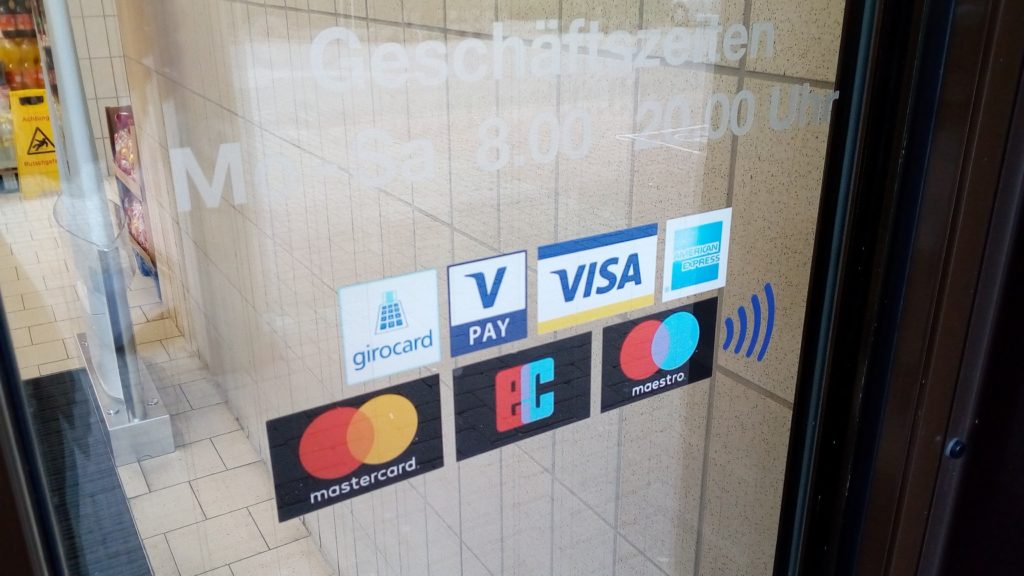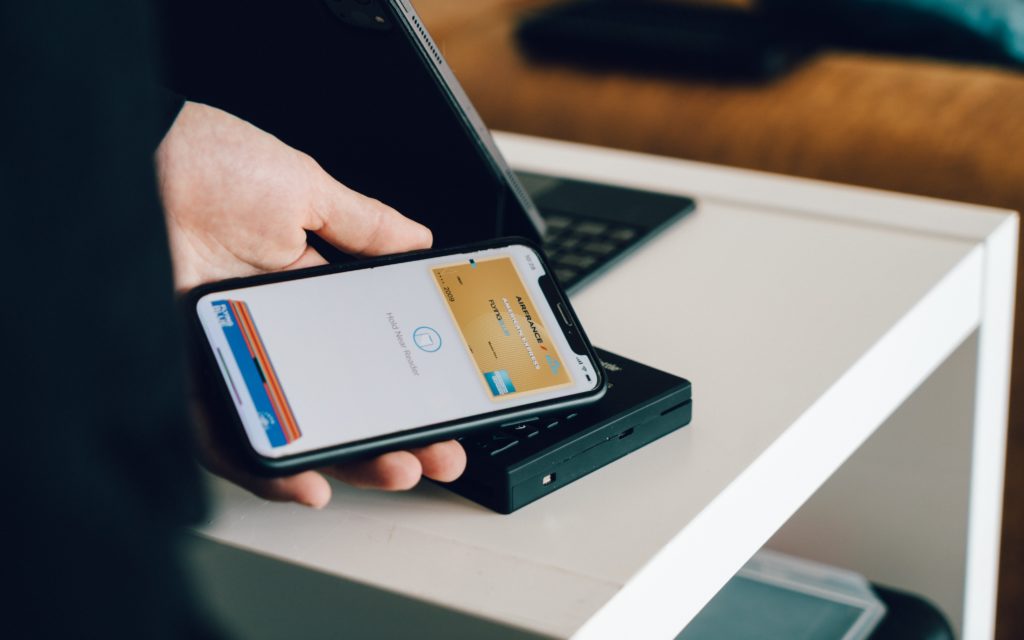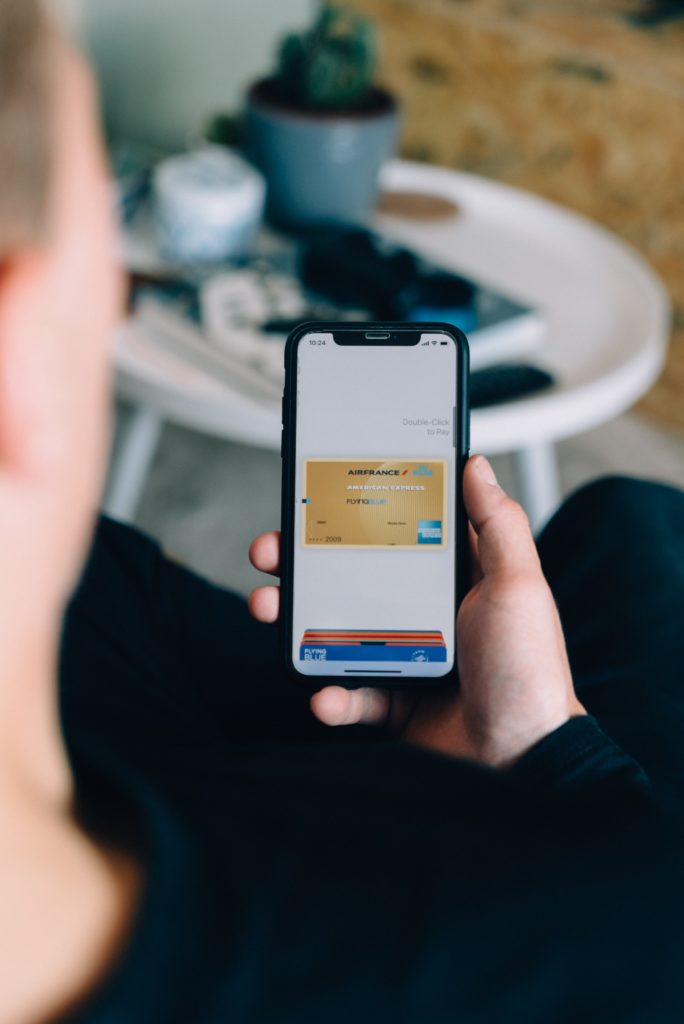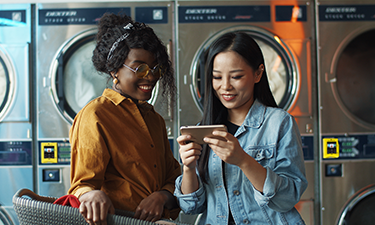Experts believe a completely cashless society could become a reality within the next five years. Data from the World Bank and the largest credit and debit card providers further indicates that this shift would take the globe by storm, with countries such as Canada, Sweden, the United Kingdom, Hong Kong, Australia, and Japan leading the charge.
As more and more consumers declare a war on cash, let’s take a look at the forces at play here and try to understand which cashless payment methods will have a role in dethroning paper money.
Explained: The shift toward a global cashless society
Attitude towards cash changed during the COVID-19 pandemic
The global health crisis of COVID-19 forced institutions around the world to rethink contact with questionable surfaces. Cash featured prominently on this list because research shows that banknotes are literally “dirty,” with cash changing hands at least 55 times a year.
So, to adapt to the “new normal,” people decided to change their spending habits. Contactless credit cards, debit cards, NFC bank cards, tap cards, and contactless cards started gaining popularity along with other automated solutions such as TouchPay Direct, mobile payment apps, QR codes, and wearables, like the Apple Watch.The use of person-to-person (P2P) payment apps also surged dramatically, with people sending money to loved ones in need, paying back neighbors for groceries, or paying rent to homeowners.
As a result, ATM use witnessed a massive drop in many countries. This prompted companies like Mastercard and Visa to collaborate more closely with governments and provide a touch-free experience for customers. With cashless payments becoming easier for merchants to accept, many startups and small businesses shifted to an entirely contactless payment system.
Even the United Nations leveraged the pandemic as a springboard to advocate a push for alternative payment methods, highlighting the need for a robust digital infrastructure to achieve the Sustainable Development Goals (SDGs).
Numbers don’t lie: A world without cash is becoming a reality
Make no mistake, the cash-free lifestyle trend had traction even before the pandemic. In an average week, roughly three in 10 Americans were already making zero cash purchases. But, the ongoing war on cash is certainly proving to be a catalyst for a cashless society.
A recent global consumer study reveals that nearly 8 in 10 people are now using contactless payments, with 74 percent of the respondents insisting they will continue to make contactless purchases in the post-pandemic era.
The same is true for retailers as well. Try spending a $100 bill in the US these days and a retailer will likely point you toward a credit card reader. Small businesses, in particular, don’t want to revert to outdated payment methods because they’ve realized cash transactions are a drag on their efficiency, especially in high-volume retail environments such as grocery markets or coffee shops.
Unsurprisingly, between pre-pandemic 2020 and February 2021, cashless businesses more than doubled in the US, Australia, Canada, and the UK, and nearly doubled in Japan. Today, 80% of all contactless transactions are under $25 – a range that has traditionally been dominated by cash.
Most popular payment methods
According to a study that the US Federal Reserve conducted in 2020, Americans reported making 28 percent of their payments with debit cards followed by 27 percent with credit cards.
More specifically, consumers now prefer using contactless cards to make purchases. According to Visa, contactless card usage in the US has grown by 150 percent since March 2019. At the same time, tap and pay transactions in everyday retail segments, such as grocery and pharmacy, have grown by more than 100 percent year over year.
Additionally, a recent report on global payment trends indicates that mobile wallets have gained significant acceptance around the world, rising 19.5 percent from 2019 to represent 25.7 percent of 2020 POS (point of sale) transactions. The report further states that, by 2024, digital wallets will likely eclipse all other payment methods in global e-commerce, rising to account for almost 52 percent of all transactions.
Other popular payment methods in an increasingly cashless society include browser-based and in-app online purchases, in-store checkout using a QR code, wearable devices, and P2P payments.
Lack of preferred payment option means no sales
As cashless payment options sky-rocket, more and more consumers now expect to be provided with their preferred contactless payment method. This is especially true when it comes to choosing a local business. Being offered convenient payment options is the second most important factor customers consider (41 percent), next to customer service (60 percent).
This trend becomes more visible when you look at high-income groups where 38 percent of consumers report that they don’t shy away from abandoning transactions entirely when their preferred methods of payment aren’t available. This is why experts stress that local businesses need to be acutely aware of the payment preferences of their customers.
Interestingly, a majority of customers have now begun to use two or more cashless payment methods, indicating omnichannel adoption and a deeper level of digital engagement. To understand some interesting trends about the newer ways customers are making purchases since the COVID-19 outbreak, we looked at the 2020 American Express Digital Payments Survey. It reveals that in-app and online for curbside pickup has increased by 16 percent, delivery apps have witnessed an uptick of 12 percent, and in-app and online purchases for in-store pickup have grown by 6 percent.
Merchants understand the benefits of contactless payments
As consumer interest continues to grow for fast and convenient non-cash payment options, the number of merchants who are promoting the use of contactless payments are also on the rise. About 80% of merchants today encourage their customers to use a credit card reader and no-touch payments.
In addition to reaping the benefits of increased efficiency and an enhanced customer experience, business owners admit they feel safer with contactless technology since it means they have less cash on their premises.
Let’s not forget that managing cash comes at a rather high cost. Between collecting money from the pay stations, counting it in the revenue department, transferring change, and transporting the cash between the bank and the place of business, an operator located in a metro area is likely to lose around 7% of their revenue due to cash management.
It’s of little surprise then that payment revenues in Europe are expected to increase by an average of 5.3 percent annually from 2020 to 2025 because of the higher use of cashless transactions and online shopping post-pandemic.
Escalating phone use and mobile commerce (m-commerce)
In a 2021 survey, nearly half of the respondents shared that they spend five to six hours on their phones on average on a daily basis. This is in addition to work-related smartphone use. Further, in 2020, consumers downloaded 218 billion mobile apps to their connected devices globally, up from the 2016 figure of 140.7 billion. Needless to say, these numbers are expected to continue to grow.
Mobile payment solution providers leverage these trends to facilitate online shopping. This is why even social networking channels such as Facebook and Instagram have introduced “buy” buttons in their interface to facilitate m-commerce.
Experts stress that mobile POS payments will contribute about 37%, which is equivalent to $2.5 trillion, to the global digital transactions value in 2021. And by 2025, the value of mobile payments is likely to surge by 90 percent to reach the $4.6 trillion mark.
China is a pioneer in the field of cashless m-commerce. Its growth in this segment is being fueled by two companies in particular: Alibaba’s Alipay and Tencent’s WeChat Pay. Interestingly, Alipay and WeChat started out as mobile wallets but have now evolved into super apps, aka a one-stop-shop that serves all kinds of needs, right from hailing taxis and ordering food to managing doctor consultations and financial investments.
As the world moves toward a cashless society, we can expect more mobile wallets to offer additional, value-added services like Alipay and WeChat.
Cashless, walk-out shopping is propelling a retail revolution
To appreciate just how dramatically the world of payments is changing, you need to look only as far as Amazon, the second-largest US retailer. Leveraging state-of-the-art technologies such as computer vision, sensor fusion, and deep learning, the retailer is facilitating a checkout-free shopping experience at its Amazon Go stores.
This has encouraged traditional supermarkets like the UK’s Tesco, Morrison, and Sainsbury; Germany’s Aldi Nord; and Israel’s Shufersal to trial AI-powered cashier-less sensor and camera-based stores as well. When a shopper exits the store, cameras and weight sensors calculate what they picked up. They are then charged accordingly directly through an app.
This cashless, walk-out model offers several benefits for retailers and customers alike. While shoppers enjoy unparalleled convenience and speed, retailers get access to customer insights that traditional POS systems could never offer. For example, how long was a customer standing in front of a shelf and what products did they select, or what products were picked up and then returned to the shelf without being purchased.
Deep behavioral insights like these have traditionally been available only to e-commerce retailers. But the new cashless, walk-out model has the potential to completely transform brick-and-mortar retail by leveling the playing field between online versus offline shopping.
Changing purchasing habits drive digital innovation
The growing impetus to make transactions invisible and cashless can be felt in the legacy payment ecosystem as well. The rise of global fintech companies, like Nayax, and an ever-increasing digital customer base have forced even traditional banks to invest in digitalization.
The shift toward a cashless economy is so stark that almost 70% of banks in Europe, the Middle East, and Africa are now convinced they will lose market share within two years unless they double down on digital transformation.
Therefore, banking institutions across the globe are now looking to replace cash and checks with instant payments; build infrastructure that would allow more merchants to work remotely; adopt digital currencies into universal payments solutions; and embrace a scalable, cloud-based payments infrastructure that would put automation and analytics front and center.
Experts are optimistic that a truly interoperable, ISO standards-based transaction system will evolve over time, addressing challenges of closed versus open ecosystems, country-level data specifications, legislation, digital identity, and trust.
The growth of central bank digital currencies
A discussion about banks and the cashless payment ecosystem cannot be complete without pointing to the rise of central bank digital currencies (CBDCs), which refers to virtual money backed and issued by a central bank.
According to the International Monetary Fund (IMF), CBDCs have the potential to make payment systems more cost-effective, competitive, and resilient. Moreover, in countries where a large number of people do not have a bank account, CBDCs could help enhance financial inclusion, especially when paired with digital ID systems. Also, CBDCs can be leveraged to improve cross-border payments, which are often slow, costly, and not easily accessible.
The Bahamas introduced the world’s first CBDC in 2020. Today, five countries have fully launched a digital currency while 81 countries are exploring a CBDC. Of these, 14 other countries, including Sweden and South Korea, are in the pilot stage and preparing for a possible full launch of their digital currencies.
Once a retail CBDC is integrated with core banking and payment functions in a cashless society, people will be able to make payments directly from one electronic wallet to another, without requiring validation from the banking system. This would be similar to how cash transactions today don’t mandate the involvement of banks.
Big tech’s role in a cashless economy
Multinational technology companies, who have typically not offered contactless payments as a core business offering, are now looking to assume the role of credit unions and other small to mid-sized financial bodies.
According to a report by CB Insights, big tech companies that include Apple, Google, Amazon, and Facebook have already invested a staggering $1.2 billion in 14 fintech and cashless payment companies so far this year.
Thanks to the sheer quantity of their active user base, these tech giants know they have an incredible reach in the consumer market. This existing customer base can be leveraged to drive a higher adoption rate of offerings in financial services such as Apple Pay, Google Pay, Amazon Pay, and Facebook’s WhatsApp Pay, as well as the Libra digital currency network. In the US, for example, nearly 90% of stores today accept Apple Pay.
It’s worth highlighting that increased use of application programming interface (API) makes it easy to embed cashless payment options into any product. This plays to the strengths of big tech firms as opposed to traditional financial institutions that still rely on outdated legacy systems.
Voice-activated transactions are on the rise
As tech companies make rapid strides in machine learning and artificial intelligence, voice-activated transactions are being counted among one of the future cashless payment trends.
In reality, though, the voice commerce revolution has already begun. Institutions like Royal Bank of Canada, Barclays, and Santander have introduced voice-based payments via Apple’s Siri voice assistant.
Moreover, thousands of Exxon and Mobil gas stations in the US started accepting payments through the “Alexa, pay for gas” voice command. When a customer gives the command on the Amazon Echo Auto device or the Alexa app on a smartphone, the AI assistant confirms the station location and pump number before activating the pump. The payment is then automatically completed through Amazon Pay after fueling up the vehicle.
Studies reveal that while 65% of consumers are aware that they can use voice-activated systems such as Amazon Echo or Google Home for payments, the actual adoption rate is only 18 percent because retailers don’t really promote voice transactions. This is why Amazon is now actively inviting merchants to offer a fast and hassle-free cashless payment solution through the Alexa cloud-based voice service.
All in all, with the continued proliferation of Internet of Things (IoT) devices and 5G internet connectivity, voice-based payments will truly come into their own in due time.
Integrated payment systems in smart cars
Another upcoming cashless payment method is connected car payments, which is a subset of connected car technology. By integrating cashless payment methods like credit cards into a vehicle, this technology allows users to access surrounding commerce without ever leaving their car.
Blackberry, for example, is working on a new in-car payment service for Jaguar’s connected cars that will effectively turn a Land Rover or a Range Rover into a mobile wallet. This contactless payment system will allow Jaguar cars to pay for services such as fuel, tolls, parking, insurance, and maintenance without the driver needing to look for a credit card reader at retail outlets.
Other big brand names that are investing in the connected car payments space include Visa, Mastercard, General Motors, and Honda. Tesla has also announced that it will sell its Autopilot function via an in-car subscription.
As in-vehicle payment systems grow, more industries such as drive-throughs will look to adopt a frictionless payments experience for their customers. Experts are also bullish on the future of connected car payments, with one study predicting in-car transactions to reach half a trillion dollars by the end of the decade.
Secure and seamless payments to remain a priority
While there is no dearth of cashless payment solutions today, a superior customer experience cannot be guaranteed unless consumers are protected against fraud and theft.
As such, the European Commission requires an ideal financial security system to feature at least two of the following three authenticators:
- Something the customer knows: A password or PIN
- Something the customer has: A device or payment card
- Something the customer is: Voice, face, fingerprints, etc.
At the same time, companies looking for an uncomplicated payment experience for their customers tend to invest in service integrations through APIs, IoT, open banking, and omnichannel platforms. To ensure customer retention, these companies also look for data analytics and big data tools that would provide them with reliable customer behavior predictions to tailor custom solutions.
An example of one such cashless payment system is Nayax, whose solutions adhere to GDPR standards and are certified by leading industry bodies including the CE, FCC, Mastercard PayPass, Visa payWave, and PCI DSS (Payment Card Industry Data Security Standard) to ensure the highest standards of security. Moreover, Nayax’s marketing, loyalty, and consumer engagement software suite is proven to increase revenue by up to 30 percent.
Is your business ready for a cashless society?
Vending machines have come a long way since their earliest antiquated models. They’ve gone from selling packaged snacks and sodas at hotel lobbies and state fairs, to offering luxury goods on the streets of Paris.
There’s no telling where the vending machine business will take us next, and with all the creativity and potential at hand, who knows what the future will bring? Whether you’re interested in starting your own unique vending business, or are just looking for a way to upgrade your existing machines, contact us today.

















